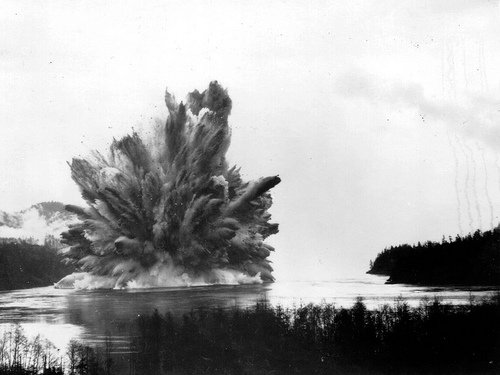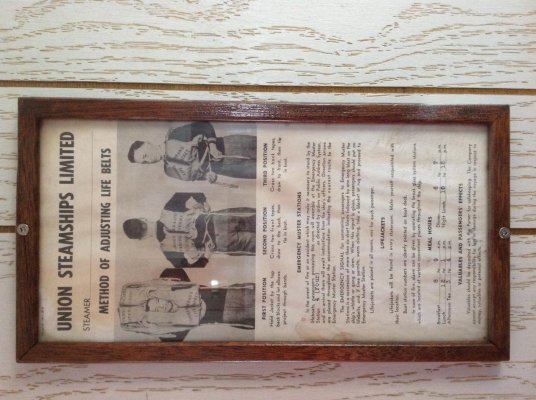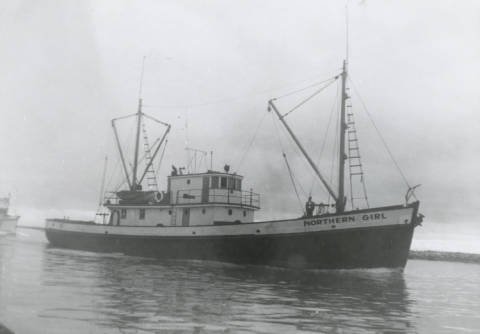I've posted about this some years back and if it's in the wrong place the admin folks can move or remove it as they see fit.
Back when there was a lot of activity up the BC raincoast, from the late 1800s through the mid 1900s, several shipping companies set up to serve the logging camps, fish canneries, and rickety waterfront communities between Vancouver and Prince Rupert. One of the most well-known was the red-and-black-funneled Union Steamship Company.
Anyone interested in the company's history and vessels would do well to read a book called Whistle Up the Inlet by Gerald A. Rushton.
I have found this company fascinating ever since reading the book some years ago, and every now and then I do an internet search for photos I might not have seen of the company's vessels and operations. Here are a few I just came across and couple I've seen before.
What I find remarkable in comparison with today's maritime environment along the same coast is that the Union captains and crews ran their not-small vessels up the same narrow channels and passes we run our boats today, fought the same strong currents, wind, fog, and weather that we do today, dealt with the same 10 to near 20 foot tidal ranges we deal with today, and negotiated the same rocks and reefs and islands we do today. But they did it with large vessels, no thrusters, no plotters, no radar, and no tugboats. They maneuvered their unwieldy vessels in and out of roughly put together piers, and sometimes up beside nothing more than a floating log and plank walkway, completely on their own.
I have for some years now thought it would be an adventure to try to retrace the Union Steamship Company's routes up the BC coast. Most of the whistle stops have long since disappeared as the airplane and technology changed the lumber and fishing industries forever, and people moved from the floating and boardwalk log camps and cannery communities in droves after WWII to the cities and towns on the mainland and Vancouver Island.
To look at the last sad, collapsing buildings at Minstrel Island today, for example, one would never suspect that this was once the center of social and business life for an entire region with dancehalls, saloons, a hotel, diners, stores, houses, and busy piers with boats coming and going at all hours of the day.
But it would still be a fascinating challenge, I think, to retrace the steps of those incredibly experienced and knowledgeable captains as they threaded their ships up and down the Inside Passage, back when high tech navigation was a series of huge sounding boards on the more treacherous reefs and a steam whistle to echo off of them.
Maybe someday we'll get to give it a shot.
(I took the last photo at Minstrel Island in 2010.)
Back when there was a lot of activity up the BC raincoast, from the late 1800s through the mid 1900s, several shipping companies set up to serve the logging camps, fish canneries, and rickety waterfront communities between Vancouver and Prince Rupert. One of the most well-known was the red-and-black-funneled Union Steamship Company.
Anyone interested in the company's history and vessels would do well to read a book called Whistle Up the Inlet by Gerald A. Rushton.
I have found this company fascinating ever since reading the book some years ago, and every now and then I do an internet search for photos I might not have seen of the company's vessels and operations. Here are a few I just came across and couple I've seen before.
What I find remarkable in comparison with today's maritime environment along the same coast is that the Union captains and crews ran their not-small vessels up the same narrow channels and passes we run our boats today, fought the same strong currents, wind, fog, and weather that we do today, dealt with the same 10 to near 20 foot tidal ranges we deal with today, and negotiated the same rocks and reefs and islands we do today. But they did it with large vessels, no thrusters, no plotters, no radar, and no tugboats. They maneuvered their unwieldy vessels in and out of roughly put together piers, and sometimes up beside nothing more than a floating log and plank walkway, completely on their own.
I have for some years now thought it would be an adventure to try to retrace the Union Steamship Company's routes up the BC coast. Most of the whistle stops have long since disappeared as the airplane and technology changed the lumber and fishing industries forever, and people moved from the floating and boardwalk log camps and cannery communities in droves after WWII to the cities and towns on the mainland and Vancouver Island.
To look at the last sad, collapsing buildings at Minstrel Island today, for example, one would never suspect that this was once the center of social and business life for an entire region with dancehalls, saloons, a hotel, diners, stores, houses, and busy piers with boats coming and going at all hours of the day.
But it would still be a fascinating challenge, I think, to retrace the steps of those incredibly experienced and knowledgeable captains as they threaded their ships up and down the Inside Passage, back when high tech navigation was a series of huge sounding boards on the more treacherous reefs and a steam whistle to echo off of them.
Maybe someday we'll get to give it a shot.
(I took the last photo at Minstrel Island in 2010.)
Attachments
-
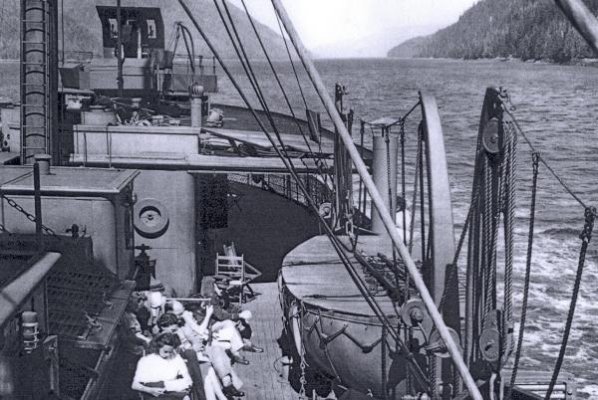 Union Steamship Co. 1.jpg59.3 KB · Views: 283
Union Steamship Co. 1.jpg59.3 KB · Views: 283 -
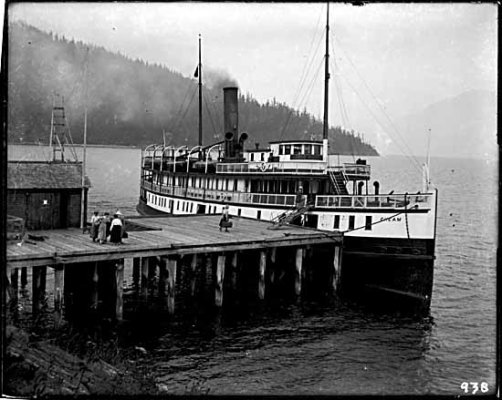 Union Steamship Co. 2.jpg33.6 KB · Views: 421
Union Steamship Co. 2.jpg33.6 KB · Views: 421 -
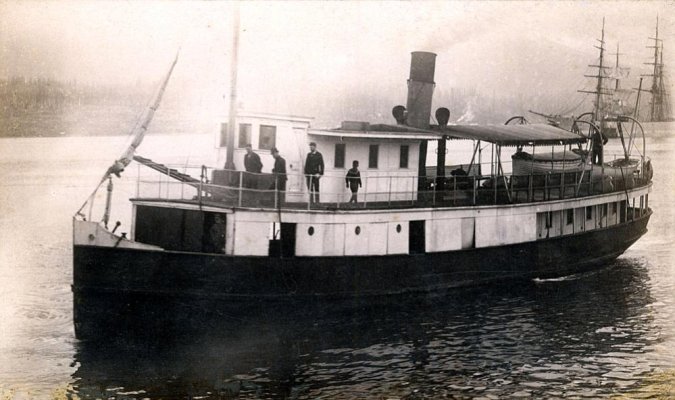 Union Steamship Co. 3.jpg93.4 KB · Views: 248
Union Steamship Co. 3.jpg93.4 KB · Views: 248 -
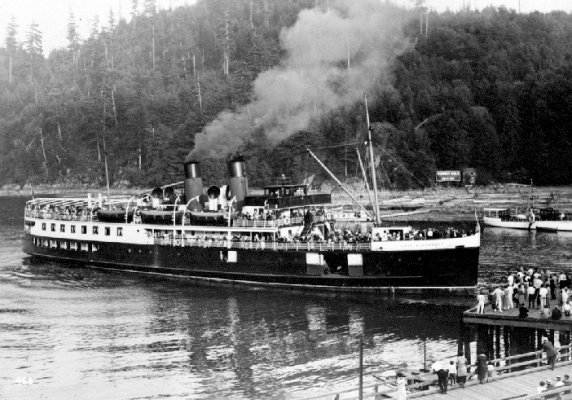 Union Steamship Co. 4.jpg170.4 KB · Views: 521
Union Steamship Co. 4.jpg170.4 KB · Views: 521 -
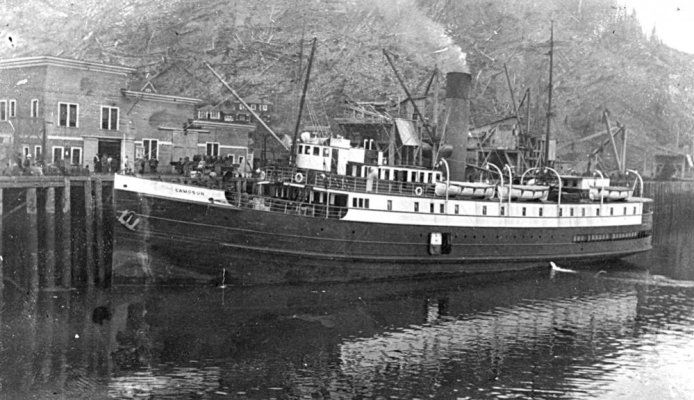 Union Steamship Co. 5.jpg111.7 KB · Views: 334
Union Steamship Co. 5.jpg111.7 KB · Views: 334 -
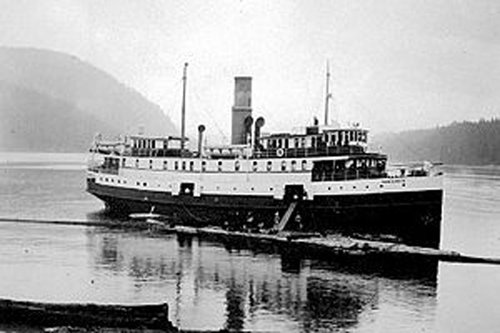 Union Steamship Co. 6.jpg110.8 KB · Views: 232
Union Steamship Co. 6.jpg110.8 KB · Views: 232 -
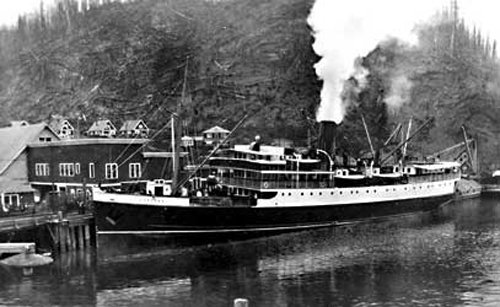 Union Steamship Co. 7.jpg137.2 KB · Views: 351
Union Steamship Co. 7.jpg137.2 KB · Views: 351 -
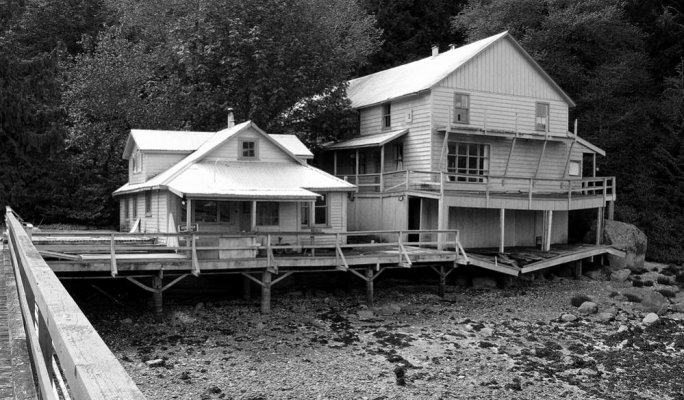 Minstrel Island 2010.jpg141.5 KB · Views: 446
Minstrel Island 2010.jpg141.5 KB · Views: 446
Last edited:

